At 2am on a cold winter’s night in London last year I was loitering in the shadows on Furnival Street near Chancery Lane tube station with a veteran urban explorer called Lucy Sparrow. Across the street was a six-storey building with scaffolding haphazardly arranged on its facade, pinioned by a large blue wooden hoarding and an aluminium sign reading: “Caution - deep manhole. Do not enter.”
Our fingers were going numb in the cold as we waited for a black cab parked at the end of the street to leave. It looked like he was taking a break, listening to a late-night radio show, but after what felt like hours he finally clicked on his lights and pulled away. We withdrew into the darkness as he drove past.
When the street was empty, we sauntered across arm-in-arm – just another pair of late-night lovers out on the piss. Out of sight of a nearby CCTV camera I crouched down, interlaced my fingers and boosted Lucy over the wooden hoarding so she could quietly open an emergency fire door from the other side and let me in. The whole performance was over in a blink. Twenty minutes later, a late-night rambler might pass and have no clue that we were 60m under their feet, running through miles of empty tunnels in what was once Britain’s deepest telephone exchange.

I am a geographer interested in what is not on maps. Over the past six years I have spent much of my time sneaking into places closed to public access as a part of a long-term research project on urban exploration. Urban explorers – who now number in the thousands across the globe – access neglected, forgotten, closed and hidden areas in cities. Tagging along with some of the most dedicated and skilled urban explorers in the world, I have trespassed into countless abandoned buildings and subterranean tunnel systems and scaled prominent skyscrapers in dozens of cities without permission - including the Shard back in 2012, before the far more daring external summit by Greenpeace activists the following year.
There is attentiveness to time in everything urban explorers do: from a considered historic appreciation of derelict remains, to knowing the window of opportunity when one can scale a construction crane over the City – explorers recognise everything is temporary. Not long into my research, I was told by a French explorer that “ruins are just like construction sites because they reveal the city as it really is – a place of constant change”. Though ruins and construction sites morph at a different rate, he argued, they both hint that the city we pass through every day requires careful and dedicated maintenance to preserve the urban stasis we all take for granted.
There is also attentiveness to space. Victorian Londoners used to tour urban infrastructure, including sewage pumping stations, curious to know how it all worked. Far fewer people today think about what happens where they flush the toilet, make a phone call, or throw something in the bin - what kind of process that triggers and what sort of physical spaces are required to make those things possible. As Alan Weisman made clear in his book The World Without Us, the time it would take for the city to begin to break down and deteriorate if we stopped maintaining it is incredibly short.
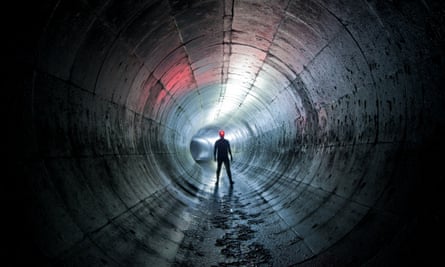
The photography of hidden places that explorers undertake – a practice which is quickly developing its own particular aesthetic sensibility – is an attempt to create a visual mark of the present, with reference to what came before, what will come after, and how it is all connected through us. Explorations behind the scenes show us that a city is not a collection of isolated locations but a beautifully and delicately threaded tapestry of wires, pipes and rails.
I’ve experienced many incredible things tagging along on missions into the forbidden city, and as much as I might treasure memories of watching sunsets from the roofs of council blocks or waking up on top of bridges, it is undercity London that most piques my interest. The tangle of tunnels that keeps the city ticking are vast, diverse in function and undoubtedly the most difficult in the world to access, this being the city of paranoia and all.
The urban exploration crew I had worked with, the London Consolidation Crew or LCC, had long graduated from ruins and skyscrapers – it was the city in the city they were after, the secrets buried deep underground where the line between construction site and ruin is very thin indeed. The Kingsway Telephone Exchange was the crème de la crème, more coveted even than abandoned Tube stations or possibly even the forgotten Post Office railway we accessed in 2011.
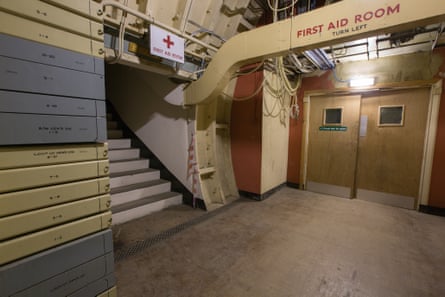
Kingsway was originally built as a second world war air-raid shelter under Chancery Lane. These deep level shelters were, at one time, connected to the Tube and citizens would have undoubtedly taken refuge here during Luftwaffe bombing runs. In 1949 the tunnels were sold to the General Post Office where they became the termination for the first submarine transatlantic phone cable – the £120m TAT1 project. The system, meant to protect the vital connective tissue of the city in the event of terror-from-the-air (including nuclear attack), stretched for miles. It only had three surface entrances and contained a bar for workers on their off-hours, rumoured to be the deepest in the UK at 60m below the street. Although the government employed a host of people to maintain the tunnels, Kingsway was a spatial secret of state - part a trio of the most secure and sensitive telephone exchanges in Britain, along with the Anchor Exchange in Birmingham and the Guardian Exchange in Manchester.
The conversion of the air-raid shelter into the Kingsway Telephone Exchange was undertaken secretly by the government. In 1950 the tunnels suddenly vanished from the map, as did a big chunk of taxpayer money used to retrofit them. However, as the journalist Duncan Campbell wrote in his book War Plan UK, “the secrecy of the new government project did not last long - a report of the ‘Secret Network of Tunnels’ appeared on the front page of the Daily Express in September 1951.” The Express later published a second article suggesting new networks were being dug under Whitehall – what would eventually become subterranean military citadels, connected by tunnels not on any map of underground London, even today. The Cabinet Office called a meeting with MI5, GPO employees and Ministry of Works officials to discuss their options for suppressing the Daily Express or leaking counter-information about the tunnels. Campbell writes:
The minutes of the secret committee, known only as MISC 379, observed: ‘It would be embarrassing to the government if the public got the impression that deep shelters were being constructed. Either the public would think that the government were out to protect their own skins and those of their immediate servants; or the public would assume that the shelters were intended for public use in time of war and would be disappointed when they found they were not.
Word of these tunnels systematically disappeared from the public eye. Then, incredibly, in 1980 the ever-tenacious Campbell – equipped with a bicycle and a camera - gained access to them and explored the entirety of the system. He published his explorations, including photos, in the New Statesman. The GPO suggested the explorations were fake and that the photos of the tunnels had been made in a studio - which obviously wasn’t the case because Campbell relayed access details for the tunnels which, 30 years later, got us in.
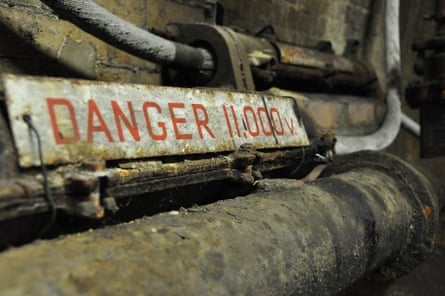
After climbing 60m down a set of alternating ladders in a long, vertical metal cage, we emerged into a set of tunnels that smelled reassuringly neglected. Like a post-apocalyptic game show, we suddenly had to make a choice between three tunnel entrances to the left, right and straight ahead. It turned out it didn’t really matter which we entered, they all linked back on each other in the end. Once we had circled back, we were sure we were alone and had the run of the tunnels all night. We found the bar, the switchboard, medical facilities, power control panels and more.
Two things really struck me while we were in there. First, the electricity was on wherever we went. I couldn’t help but wonder whose job it was to change the bulbs in the (no-longer-so) secret subterranean telephone exchange. Second, the tunnels, in the middle of winter, were a cosy hoodie temperature. It made me think about how all this space was being wasted, space that was built with taxpayer money. I thought about Campbell’s determination over 30 years ago to make clear what was being spent by the government and the lengths he was willing to go to to reveal what was still a state secret and the way he insisted that the government should be held accountable for the construction of this bizarre underworld.
Today, we’ve been so inculcated with fear and distracted by obligations and consumer junk, we can’t even be bothered to ask why numerous miles of warm, fluorescently lit tunnels under Chancery Lane are laying mothballed while people with no homes freeze to death on the streets above them – forced to sleep in hypothermic conditions by anti-homeless spikes installed on ledges outside shops, luxury flats and offices.
Many of us have a sense that cities are being closed to us, but we find it difficult to articulate how or why; we simply feel we’re losing control of things in some fundamental way. Battles over space are nothing new in London of course: from private Georgian squares in the 18th century to the South Bank Undercroft in the 21st, urban space is a continually contested place. But these days we seem less inclined to stand up to spatial inequality or obstructive behaviour over the release of information.
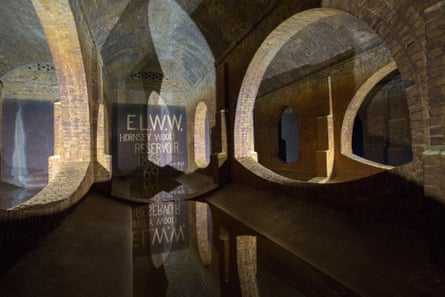
There is, perhaps, a sense that the battle is lost; that it is not worth fighting any more in a climate where we are all being monitored. New surveillance technologies or increasing corporate control of space are not the most worrying developments of our time, however – the biggest concern is growing apathy. So before you dismiss urban exploration as a weird fad – or mark it as just another interesting tab in your flooded browser to look at later – be aware that these explorers risked death and imprisonment to bring you these photos and that they insist it was worth it, because if we don’t even know these spaces exist we can hardly have a public conversation about what to do with them. Urban exploration carries on the important work of exploratory journalism; it spreads stories that help us perceive worlds other than the ones presented to us, and it gives us an alternative where one has not been offered. Urban exploration is an apathy killer.
As the geographer David Harvey wrote, the freedom to make and remake our cities and ourselves is one of the most precious and neglected of our human rights. I don’t think I’m overstating the case when I say that it’s vital to the maintenance of what few rights to place remain to continually make transparent and subvert the boundaries that are constantly being circumscribed around our bodies and imaginations. Rather than condemning the system, urban explorers will insist that we must simply carry on exploring and imagining, regardless of those constraints. If we want to live in cities replete with citizens rather than inhabitants, we must encourage exploration.
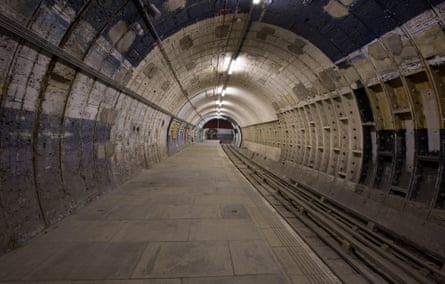
Being an urban explorer has been a wonderful lesson in geography. I’ve learned about how people build relationships to places; how space is surveilled, controlled and regulated; how the city is built to not just influence our behaviour but to actually condition the way we think about what is ethical, right and even possible. Although it was chasing the story of urban exploration that got me involved in the first instance, it is the way urban exploration makes boundaries visible and keeps me sharp, paying attention to everything and continually calling me to action, which holds my interest as a researcher.
When I walk the city now, I can’t help but imagine it vertically as well as horizontally. Most of the tourists walking at street level – photographing Parliament and clippers cruising the Thames – haven’t a clue that there is a snarl of tunnels underneath their feet, many of which aren’t on any map.
Perhaps it’s right that local knowledge should reside with locals; this is our city after all. We, like Campbell, are engaged citizens acutely aware of what’s going on around us and determined to partake in the conversation about what constitutes the city. Urban explorers want to know what is being built, by whom, with what funds and to what ends; they want to know what has been forgotten and left behind and how that space might be re-imagined with the public interest in mind. These expectations – like the expectation that people will explore whatever environment they happen to live in – are threaded with common sense throughout, unlike many of the policy decisions that have led to our cities increasingly become a sight to be seen rather than a place to participate in.
Through these photos of the London you never knew, I invite you to expand your vertical imagination of the city into subterranea: delve into the sewers, utility tunnels, abandoned Tube stations, secret bunkers and finally into the new depths being bored by tunnelling machines at this very moment. Although much of what is here is, I believe, an important piece of documentation, it is also more importantly an invitation for you to increase your understanding of what is happening under your feet right now, because the ongoing conversation about public space does not stop at the manhole cover.
Bradley Garrett is a geographer at the University of Southampton and author of Explore Everything: Place Hacking the City. His new book, Subterranean London: Cracking the Capital, was published in October 2014
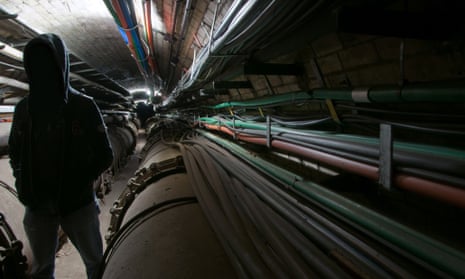
Comments (…)
Sign in or create your Guardian account to join the discussion